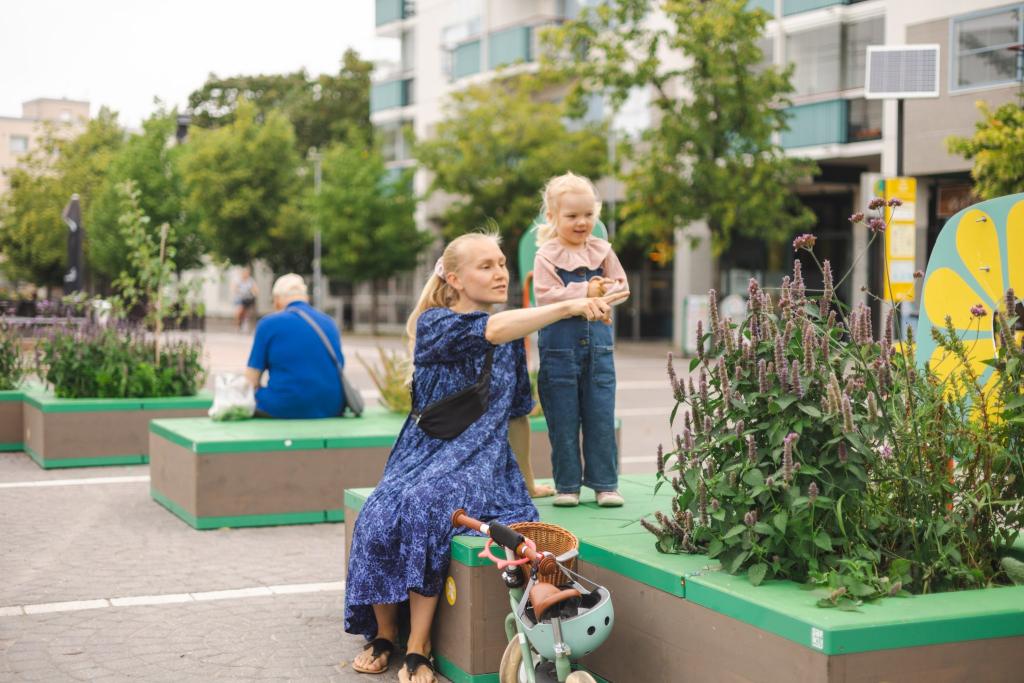
Libraries, playgrounds, health and wellbeing centres and the city’s digital services – in the last ten years, Helsinki has used design to renew many services that are key to residents’ everyday life. The renewal is resident-oriented: design is used to ensure that residents’ needs and points of view are acknowledged, making it even smoother to interact with the city.
The city started utilising design in 2012, which is when Helsinki was the World Design Capital.
“This year, we have celebrated Helsinki’s 10-year journey as a design city. There’s a great need for an even more systematic utilisation of design. We need to take design to a more strategic level and incorporate it into structural renewals, so that we can better respond to future challenges as a city,” says Helsinki’s Chief Design Officer Hanna Harris.
More about Helsinki’s design activities and the city’s 10-year design journey in Hanna Harris’s new blog post(Link leads to external service).
During the design anniversary, the City of Helsinki and Helsinki Design Week awarded Designer Päivi Raivio with the Helsinki Design Award. Raivio is especially known for her long-term work with urban-oriented design and as someone who has dedicated her career to creating better public spaces.
“Helsinki is committed to creating even better public spaces through insightful design and experiments. One of our new key initiatives is placemaking, which means the creation of enjoyable urban spaces with residents and other users. We have implemented our first pilots in urban renewal areas, in which our objective is to create a bridge between residents’ daily lives and the long-term planning of a changing city,” Harris explains.
Read Päivi Raivio’s blog post about the placemaking experiments here(Link leads to external service).
In addition, Helsinki organised an urban design seminar in September: Design and the City: Learnings from a 10-year Journey, which even received international attention. The seminar was a place for discussing current themes in urban design and setting guidelines for the future. A recording of the seminar is available here(Link leads to external service).
Helsinki invests in the effectiveness of design
In the last six years, the city’s annual design acquisitions have increased ninefold. The City of Helsinki has a network of more than 200 designers, and the design activities are also supported by external design companies. Last year, acquisitions worth more than 3 million euros were made under the service design framework agreement.
“Helsinki is one of the first cities to have tendered a framework agreement system for service design acquisitions. This autumn marked the start of the city’s third service design framework agreement. During this journey, we have also learnt a lot and developed as makers of design acquisitions. The better we know what kind of design the city needs, the more effective the results we can achieve,” City Design Manager Päivi Hietanen emphasises.
In addition to service design, which has already established its place in the city’s operations, the newest framework agreement also acknowledges organisational design, strategic design, digital service design and service environment design.
In the future, Helsinki will also monitor design initiatives and their effectiveness more closely than before. Both quantitative and qualitative data will be collected from the implemented initiatives more systematically than before. The purpose is to identify the effectiveness of the development of design better than previously.
“Helsinki’s design activities have improved enormously in ten years, and Helsinki is nationally and internationally known as a pioneer in using design. We can be proud of this. Our objective is that design will continue to be an internationally significant differentiation factor for Helsinki, as well as a key tool in developing the city,” Harris says.
Helsinki was the World Design Capital 2012 with the Cities of Vantaa, Espoo, Kauniainen and Lahti. For Helsinki, the year was a starting point for the comprehensive utilisation of design in the city organisation. Since 2014, Helsinki has been a UNESCO City of Design and a member of the UNESCO Creative Cities Network.